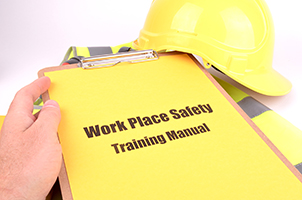By Darin Cox, Southeast Regional Manager
 Is your company enjoying the benefits of construction safety? Have you done your part to make sure that your workers leave the jobsite safe and sound? Apart from the huge shortage in construction skills, the construction industry suffers from the highest fatal injury rate than all other industries. The Occupational Safety and Health Administration (OSHA) strives to establish safe and healthful working conditions for working men and women through standards and regulations. Complying with OSHA’s policies is not a choice; it is a given for construction firms that want to prevent workplace accidents, improve employee recruiting and retention, increase productivity and build a solid reputation. Below we provide some of the steps you need to adopt to meet OSHA’s safety guidelines.
Is your company enjoying the benefits of construction safety? Have you done your part to make sure that your workers leave the jobsite safe and sound? Apart from the huge shortage in construction skills, the construction industry suffers from the highest fatal injury rate than all other industries. The Occupational Safety and Health Administration (OSHA) strives to establish safe and healthful working conditions for working men and women through standards and regulations. Complying with OSHA’s policies is not a choice; it is a given for construction firms that want to prevent workplace accidents, improve employee recruiting and retention, increase productivity and build a solid reputation. Below we provide some of the steps you need to adopt to meet OSHA’s safety guidelines.
Training
No matter how experienced your workforce is or at what stage of the project your new hires join the team, safety training must be an integral part of the way you do business. Establish safety programs that coach your workers on how to identify and control hazards. Make it mandatory that all personnel must attend these programs and keep track of attendance. When your tradespeople are educated on construction safety, the chances of an accident are minimized and your projects progress according to schedule. Having the right construction skills for your needs is one side of the coin. Making sure that everyone stays safe on the jobsite is the other.
Inspection
Inspect to know what to expect! If your tradespeople are not aware of potential worksite hazards and risks, how do you expect them to deal with them? When it comes to construction safety it is always better to be proactive. According to reports, the majority of the incidents taking place on a jobsite are preventable. Inspection is the key to finding and fixing problems before your tradespeople set foot on the site. Regular inspections help identify dangers and find ways to address them. The more you know about the worksite, the easier it is to meet OSHA’s safety guidelines.
Communication
 When it comes to construction safety you need to keep in mind that involving your workforce is more than important. This is where solid communication plays a critical role. Given that the conditions on a construction site change all the time, you need to make sure that everyone is aware of potential hazards and risks before they start work. During safety training and meetings, highlight the importance of communication across all parties as a requirement to meet OSHA’s safety guidelines. The success of a project doesn’t depend solely on the construction skills of your tradespeople. It also requires their will to work as a team.
When it comes to construction safety you need to keep in mind that involving your workforce is more than important. This is where solid communication plays a critical role. Given that the conditions on a construction site change all the time, you need to make sure that everyone is aware of potential hazards and risks before they start work. During safety training and meetings, highlight the importance of communication across all parties as a requirement to meet OSHA’s safety guidelines. The success of a project doesn’t depend solely on the construction skills of your tradespeople. It also requires their will to work as a team.
Personal Protective Equipment
Make it as clear as possible. No individual sets foot on the jobsite without first having the necessary personal protective equipment (PPE) for the job. Many tradespeople believe that their strong skills are enough to get the job done and they fall into the trap of neglecting construction safety. According to OSHA, use of PPE prevents injuries on the worksite. That being said, you must provide the appropriate equipment that is required to enhance the safety of your workers. During safety trainings, make sure that your workers know how to use safety equipment as well as what equipment they need to use for the different stages of the project.
Safety Adoption
The best way to ensure that your organization does its best to meet OSHA’s safety guidelines is by making construction safety a culture. If you just see it as a necessity to conform to the law then you are setting yourself up for failure. Safety must become the integral part of your operations and mindset. Put in place safety policies and hold your staff accountable. In addition, make certain that safety is being promoted and enhanced when you turn to subcontractors for your projects. They must comply with OSHA’s safety guidelines and embrace your organization’s initiatives for an accident free jobsite.
Key Takeaways to Meeting OSHA’s Guidelines for Safety and Health:
1. Provide necessary safety training and establish safety programs
2. Get a clear view of potential worksite dangers before your tradespeople get to work
3. Promote communication and coordination as a way to minimize hazards and risks
4. Provide your workers with the necessary PPE and demand its use at all times
5. Make construction safety a company culture and ask subcontractors to comply with it
About TradeSource
Founded in 1993, TradeSource is a construction labor solutions firm focused on delivering labor solutions to contractors throughout the United States. By supplying skilled tradespeople – where and when they’re needed – we help contractors grow their companies, without the associated costs and hassles of full-time hires. Likewise, we match qualified employees with rewarding and well-paying job opportunities in the construction industry. www.tradesource.com


Comments are closed.